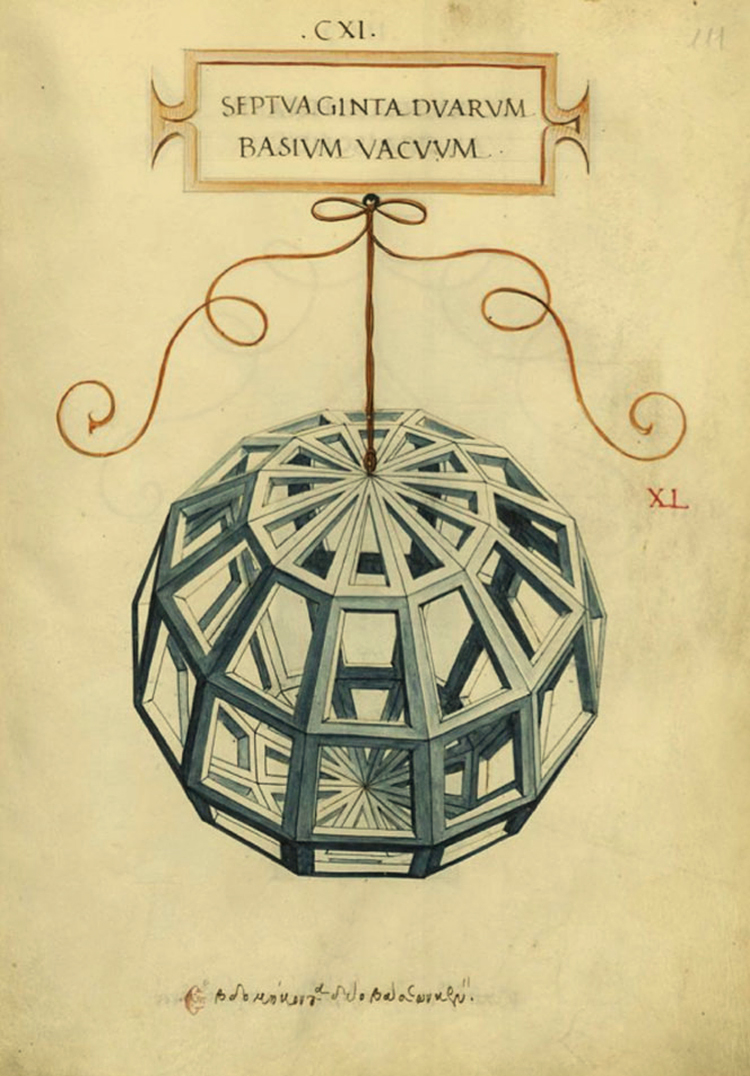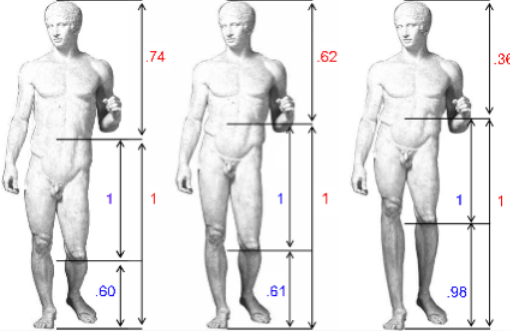The Golden Ratio in Art
Many scholars agree that the Golden Ratio makes a work of art more beautiful and harmonious. Indeed, this relationship appears in a number of works of art throughout history. Some artists might have intentionally employed the Golden Ratio after having learned of it through mathematical or artistic treatises like Luca Pacioli's De Divina Proportione or Euclid's Elements (ca. 300 BCE).

Leonardo da Vinci, Platonic solid from Luca Pacioli, De Divina Proportione (1509)
For others, the use of this mathematical device might have been purely coincidental, or driven exclusively by a natural inclination to a relationship that holds an inherent aesthetic appeal.
Italian researchers explored the latter possibility in 2007. They showed volunteers with no art historical background three versions of an ancient Greek statue: the original, based on the Golden Ratio (center), and two distorted images (left and right). Brain scans of the viewers revealed that the Golden Ratio statue activated cells associated with an emotional response to beauty.

In 2009, Duke University mechanical engineering professor Adrian Bejan posited that this proportion is appealing because the human eye can process it faster than images not containing the Golden Ratio.
Click on the "Interactives" tab to explore ten works of art in relation to the Golden Ratio.
